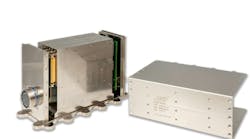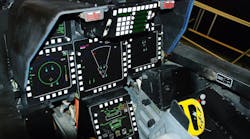"5G is coming to aerospace and defense in a big way," says Jay Alexander, chief technology officer at test and measurement specialist Keysight Technologies in Santa Rosa, Calif. Alexander made his comments this week at the International Microwave Symposium in Phoenix.
5G -- short for 5th generation mobile networking or 5th generation wireless systems -- is expected to be the next major phase of mobile telecommunications standards beyond the current 4G/IMT-Advanced standards. It will create "a jamming and communications environment of great complexity" for military communications experts, Alexander says.
5G typically is considered to be the next generation of cell phone and mobile networking in the civilian world, yet should provide a rich set of technologies and capabilities for military voice, data, and imagery communications, experts believe.
Related: Army needs industry help to chart computer technology trends over next three decades
5G describes data rates of several tens of megabits per second for tens of thousands of users; 1 gigabit per second simultaneously to tens of workers on the same office floor; several hundreds of thousands of simultaneous connections for massive sensor deployments; enhanced spectral efficiency over 4G; improved coverage; and enhanced signalling efficiency.
5G, which should become available by 2020, involves mesh networking to enable devices to communicate with each other directly rather than via base stations, which should increase the bandwidth, lower power consumption, reduce infrastructure costs, and improve spectral efficiency.
In addition to 5G, military and aerospace RF and microwave test and measurement experts also are ready to modernize their infrastructure and move from largely custom-designed and application-specific test gear to open-standard equipment, Alexander says.
"Users want more industry-standard products, and not so much for application specific," he says. "There is a huge trend to modernize that equipment. They are looking to move away from really old equipment."
Related: DARPA to keep military communications open with floating optical fiber and networking buoys
Alexander says several trends mark today's RF and microwave test and measurement market: 5G; modular test; millimeter wave proliferation; the Internet of things; automotive electronics; energy; private business space use; unmanned and autonomous vehicles; and wearable devices.
"5G is a huge wave of change," Alexander says. "Millimeter wave is a key enabler for next-generation communications."




